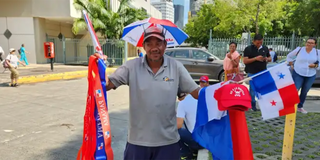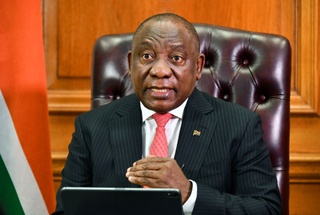News
Panama’s Masterclass in How to Trash a Country’s Economy
Panama’s politicians have mortgaged the country’s future for short-term populist satisfaction.

On 28 November, the Panamanian Supreme Court released its judgment on the legality of a contract which enabled the Canadian copper mining giant First Quantum Minerals (FQM) to extend its operations in the Central American country.
The court ruled the contract unconstitutional and authorised a process to shut the $10-billion mine down.
The ruling comes after months of protests which have paralysed the country’s major roads, including the port and powerplant servicing the mine, an investment which employs 50,000 Panamanians both directly and indirectly, and provides 75% of export income.
The campaign has coalesced indigenous and environmental groups, along with the usual throng of international celebrity activists.
Leonardo DiCaprio has been among those playing a supporting actor role in this, his latest environmental cause, offering support for the campaign against the continued operation of the mine.
But DiCaprio is placing himself on the wrong side of history, not for the first time. And not only because the mine put Panama squarely at the centre of the global energy transition, in which copper is a critical component.
But the Hollywood star is not the only one to blame for a fiasco which now most likely will see the government of Panama having to defend itself in several international arbitration actions. If it loses, and the signs are there, these could cost the government north of $60-billion, accounting for lost income by the company and its suppliers and investors.
Politics is at the root of the crisis over the extension of the mine’s operating licence.
It’s become a masterclass in populist politics, hapless and ailing leadership, the peddling of falsehoods and cynical opportunism, an upcoming election, an opposition seeking a populist message and smelling the ruling party’s blood, an opposition leader and former president apparently destined for jail on corruption charges, and widening social and economic inequality and worsening distress countrywide.
This is the stuff of real Hollywood epics.
The politics of Panama resembles scenes from Beverly Hills 90210, a soap that follows the lives of a group of friends living in a California suburb as they transition from high school to college and into the adult world; 90210 refers to one of the city’s five postal codes.
In addition to the usual fare of romance, friendships and scandal, the show addressed issues from date rape, homophobia, animal rights, alcoholism, drug abuse, domestic violence, eating disorders, racism (including anti-Semitism), teenage suicide and pregnancy, and Aids. You name the topical issues of the day, they had it covered. Today the show might have added cancel culture, the environment, the LGBTQI+, AI and rampant consumerism, among others.
Beverly Hills 90210 is an apt metaphor for Panama 11/20/23. Yet today’s season is scarcely believable by comparison, if similarly febrile, fuelled as it is by innuendo and hyperbole more than fact.
Supporters of the Panama deal argued that it would enable thousands of jobs while paying the government royalties and taxes of at least $375-million per year — a big slice for a small country of 4.4 million.
Its overall contribution is estimated at 5% of Panama’s GDP.
Given the 35% drop in water supplies to the canal due to El Niño, dropping daily transits from a target of 50 to around just 30, the mine was set to grow in overall economic importance.
Paradoxically, the deal suffered in public eyes because it was approved by an unresponsive government with weak credibility and approved by legislators who are widely considered corrupt.
This view of the political system has its roots in spiralling costs of living and poor services.
While poverty in Panama declined from 48.2% in 1991 to 12.1% in 2019, this masked jumps in informality and unemployment according to the World Bank, with the 14th-highest Gini inequality rating in the world.
The Bank predicted that poverty would come down to pre-pandemic levels by 2025, thanks to GDP growth expected to top 6%, a scenario which ironically relied heavily on copper revenues.
FQM’s investment in Panama might have been the first of many in a country blessed with natural resources. The advantages have so far been considerable. FQM’s contract with the government was spread across two 20-year periods, renewable subject to mutual agreement.
The new agreement, signed into law this October, enables Minera Panamá to continue to operate Cobre Panamá, the largest open pit mine in Central America.
The government of President Laurentino Cortizo, which negotiated the new contract after a four-year delay, assured that the new contract would guarantee the environment while increasing income to the treasury tenfold.
Still, an alliance of unions and indigenous groups insisted that the contract be repealed by Parliament, organising the largest protests seen in the country since the National Civic Crusade of 1987, when Panamanians dressed in white and took to the streets, clanging pots and pans to protest against the military dictatorship of “Old Pineapple Face”, General Manuel Noriega.
The general, who had de facto ruled Panama since 1983, was ousted in an American invasion in December 1989.
Spurious arguments
When Cortizo’s government presented a negotiated renewal to the National Assembly this August, the process became hyper-politicised, despite FQM’s presence for a decade. Then, when the Assembly approved the deal, and Cortizo signed it, protests erupted – arguments against the deal being made on several spurious grounds.
These included the idea that the country only got 2% of the proceeds, which was not the case.
One common legend was that the mine was damaging to the environment and drying up the water for the canal, even though Cobre Panamá does not share a water catchment with the canal. In fact, the mine has planted more trees than it has removed, while the major threat to the canal’s water catchment area is not from the mine, but from the spread of pastoral agriculture and slash-and-burn clearance methods.
A country of roughly 7.5 million hectares, Panama’s forests account for four million hectares, with pasture making up one million hectares, while cultivated land is 600,000 hectares.
In percentage terms, 23% of Panama’s land is used for agriculture, compared to just 0.07% for mining. That tiny area of land used for mining accounts for 5% of GDP and 75% of exports, meaning each hectare of land used for mining generates $800,000 to GDP, while agriculture makes just $920 per hectare.
But opponents are not really interested in the details or the facts. The arguments against it are deeply immersed in politics.
President Cortizo, hoping to appease the protesters, signed a moratorium on new mining concessions, which applies to some 13 pending applications, but not to First Quantum. Cortizo also announced the holding of a referendum on 17 December on whether to revoke the controversial contract. This idea was quickly withdrawn by the besieged president.
Opponents claimed the new contract (Law 406) was fast-tracked with little public input or transparency and demanded its immediate cancellation.
Arbitration cloud
If the closure were to now go ahead, it would have grave effects; it would certainly spark a series of substantial international arbitration claims. Not only would Panama’s investment grade fall, but so too would its income.
In essence, Panama’s politicians have mortgaged the country’s future for short-term populist satisfaction.
As the most popular politician by a Panamanian country mile, former president Ricardo Martinelli has resigned himself to jail time on what he says is a politically motivated judicial process; the also-rans have been reluctant to contradict the government line, even though their country’s – if not their political – future might depend on it.
The expediency does not end with politics.
Local Panamanian business interests are apparently uncharacteristically disinterested in the case, suggesting that they might cherish brokering a settlement which sees them take a freebie stake in the mine – no matter what this says about the rule of law (or lack of it).
Gringos for the taking, reads that jaded script.
All this raises questions about the guarantees that mining companies should seek before they operate, and how an event in one country could endanger development thousands of kilometres away in Africa.
First Quantum Minerals is the largest miner, taxpayer and forex earner in Zambia, 12,000km away.
Even so, the West has been diplomatically mute, caught between genetic emasculation, contemporary wokeness and the imperative seemingly to maintain a healthy distance from private interests – perhaps because of, and not despite, the region defining the ugly face of American state capitalism for a century.
Yet just imagine if a Chinese mining giant was embroiled and treated in this way. Beijing would not, I suspect, be offering them only a ride to the airport or a sternly worded press release about the need to safeguard civilian lives, maintain the rule of law, and ensure a global energy transition.
While this saga is a sad reflection on politics, and populism in particular, it also holds a mirror up to the world in which we live, and the extent to which consumers are willing to face up to their choices.
‘Blood Diamond’
DiCaprio, for instance, has been here before, starring in Blood Diamond, a 2006 Hollywood action thriller. Set in Sierra Leone during the 1991 civil war, with DiCaprio in the role of a hard-bitten mercenary with the worst Sefrican accent since the recently departed Joss Ackland tried to imitate the then South African Consul-General Vic Zazeraj in Lethal Weapon 2, the script of Blood Diamond centred on diamonds mined in war zones and sold to finance conflicts. It was a morality play, where warlords and diamond companies prey on innocents for profit. If only things were that simple.
The flick’s ending, set in a conference hall, was more about the reality of people trying to do the right thing, by and large, in this instance the negotiation of the Kimberley Process in 2000, aimed at curbing the trade in conflict diamonds.
Blood Diamond grossed $171-million worldwide and received five Oscar nominations, including Best Actor for DiCaprio.
But, as ever, once the applause had settled on the other side of the world, and the simplistic storyline had wowed audiences, Africa had to manage the negative aftermath.
Nelson Mandela was among those who leapt to its defence, describing the diamond industry as “vital” to southern Africa’s economy.
Patrick Mazimhaka, a Rwandan diplomat serving as deputy chairman of the African Union, hit the nail on the head when he wrote in the Wall Street Journal that blaming diamonds for fuelling conflict “misses the fact that plenty of good can be accomplished with earnings from natural resources. With the right ingredients… good governance and careful leadership… commodities have been a tremendous force for continental good.”
DiCaprio said about his role, “It’s so rare that a film of this scale or magnitude, that is highly entertaining to an audience, also says something very pertinent to the world we live in, and is very specific about how we live in modern society.”

He also later said that the blood diamond theme was “to me… a symbol of a much larger issue of what happens when we demand any of these things. What is the result? What happens when there’s such a huge demand for oil, for example? How does that affect the places that have it? You know, what’s going on now in the world we live in?”
Copper is key to the global energy transition including the Electric Vehicle (EV) revolution. Copper is in wiring, ECMs, motors and other components necessary for electrification and thereby decarbonisation. DiCaprio, for one, reportedly owns the following cars: Fisker Karma, Lexus RX Hybrid, Porsche Cayenne, Tesla Roadster, Toyota Prius and Volvo XC90. All, bar the Porsche, are either electrically powered or hybrids.
If only he could drive all the activist talk.
Underneath all of this is a much larger series of questions about what kind of countries will drive the energy transition; about how they will balance natural riches with development, and who will own not only the resources but responsibility for their development.
It’s not as if Panama has not been here before.
It owes its very existence as a state to outside investment and intervention.
President Teddy Roosevelt broke the territory off from Colombia in November 1903 so the United States could finish and control the construction of the Panama Canal, finally completed in 1914 after being started (by the French) in what was then Colombia’s province of Panama in January 1881.
Inspired by the diplomat Ferdinand de Lesseps, who was able to raise considerable funds as a result of his successful construction of the Suez Canal, the French attempt at connection collapsed in 1889 after spending $287-million and losing 22,000 men, half the workforce, from disease and accidents.
The US ownership quickly became a bone of contention, fomenting rioting in the 1960s and leading to the negotiation of the treaty between President Jimmy Carter and Panamanian strongman General Omar Torrijos in 1977.
On 1 January 2000, Panama took sovereign control of the canal. It was the moment that Panamanians had been fighting for, for over 97 years.
As the poet Rodolfo Caicedo wrote a century before on ‘Peace and Progress’ in Panama:
Progress will come under its protection…
Once the Isthmus has been opened by a deep wound, this luminous breach will be a beacon,
an inexhaustible source of life.
On its edges, those who are hungry, those who suffer the miseries of beggars,
will flock
in a noisy swarm to seek bread and to beg for shelter.
During the 1960s and 1970s, Panama foundered between two competing commitments: to support US interests in the isthmus and to promote Panamanian development and a capitalist class.
That contradiction was obscured during the Noriega period when development was largely eclipsed by the militarisation of the canal under Panamanian security forces.
Now, the contradiction is back – between seeking a better future through development and radicalising the choices that this involves.
Today, the grandchildren of those who survived the deprivations of military rule of the 1960s and 1970s, and the children of those who stood up to Noriega in the 1980s, are among those protesting in the streets of Panama City under the banner, “Panamá vale más sin mineria — Panama is worth more without mining.”
If such “nimbyism” pervades, there would be no energy transition.
That transition will depend on mining companies receiving reasonable returns for their shareholders’ investment, and guarantees to invest capital and skills to do so.
Absent these returns and the related ability to derisk investments, companies will vote with their feet to more stable jurisdictions.
And Panama will be stuck, its attempt to diversify stuck beyond being a safe haven for distressed Latin Americans fleeing instability and a sea passage between east and west.
Panama and others with a similar risk profile will have to fill the development gap with other activities including tourism and manufacturing, which so far have proven insufficient for the population’s needs.
Resolving this dilemma, and spurring diversification, places a premium on strategic political skills and the necessary charisma to push things along, just as Torrijos and Carter did two generations ago with the canal.
Until then, Panama’s latest saga is a masterclass in stuffing up a country.
In Panama, as in much of Africa, the private sector is too tempting a target for actors and activists alike. When the show is over and the caravan has moved on, zooming along in their copper-wired cars to the next cause célèbre, real economies take decades to recover.
This article originally appeared on the Daily Maverick


